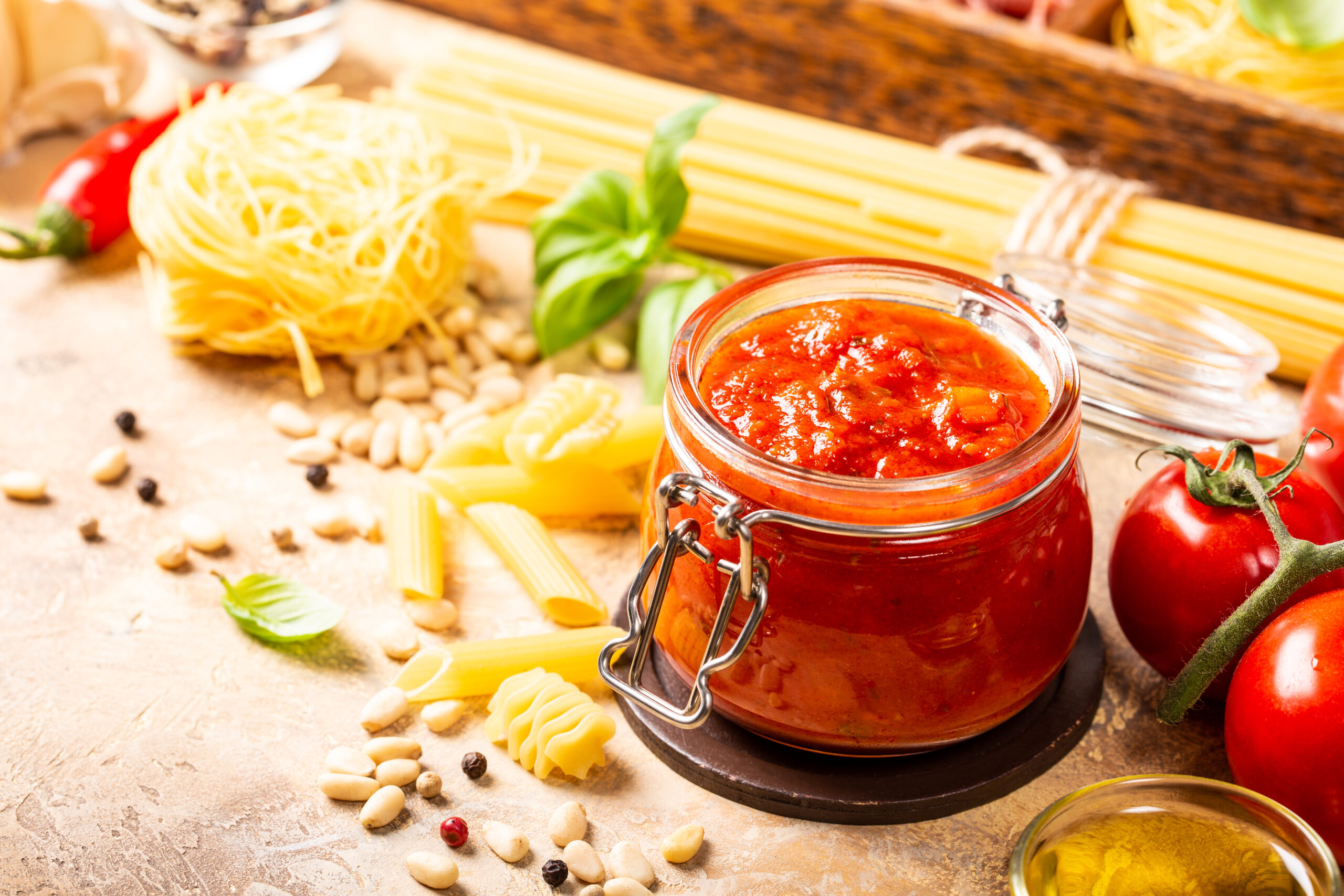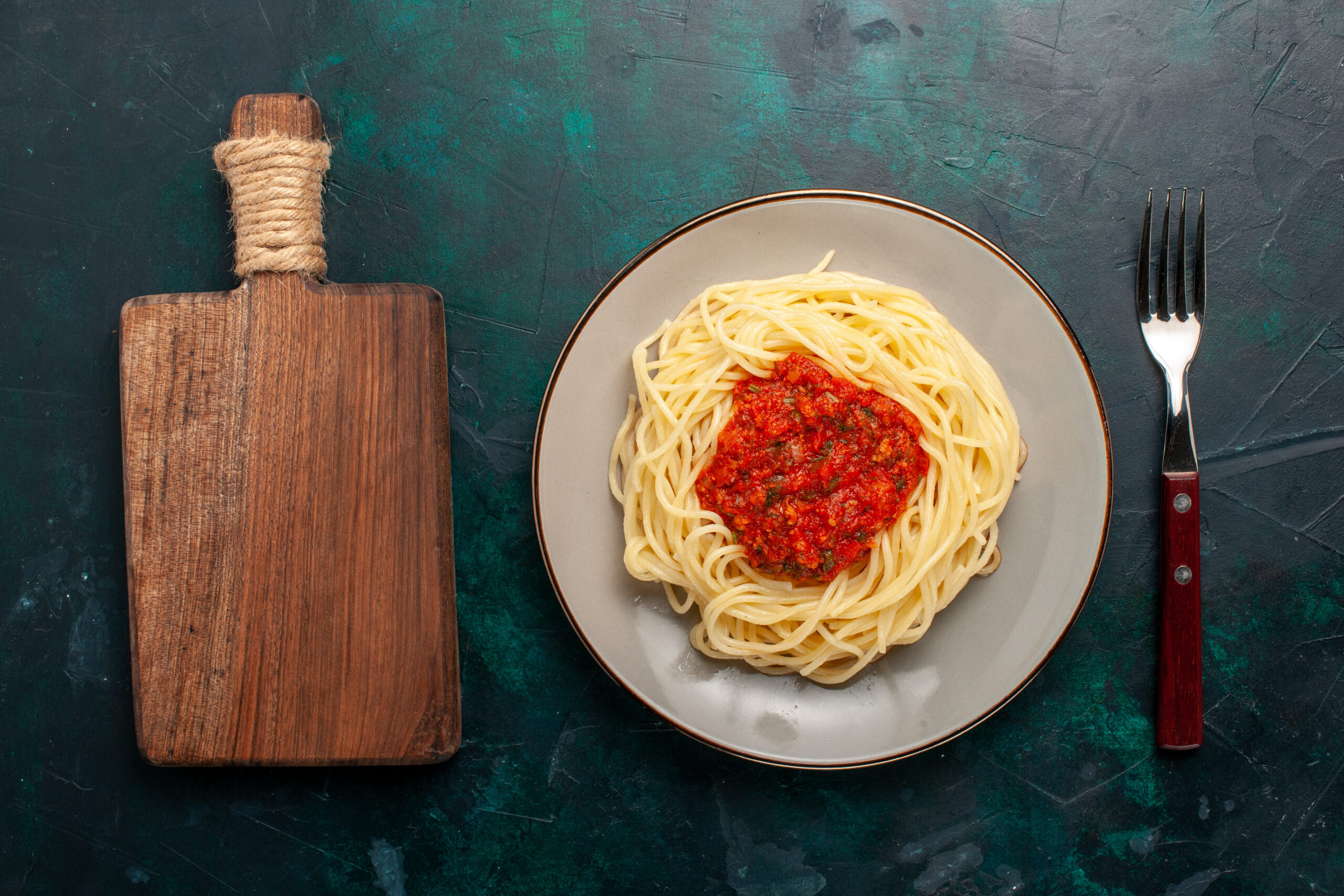When it comes to pasta sauce, a thick creamy texture is preferred since it sticks better to the pasta and holds more flavor. If you have a watery sauce, you’re going end up with soupy pasta. Luckily, you can fix this with ingredients you likely already have at home. In this guide, we’ll show you how to get thick spaghetti sauce.
How to Thicken Pasta Sauce

Here’s a complete guide on how to thicken spaghetti sauce using simple ingredients and tips:
1) Reduce and Simmer
Although it takes time, letting evaporation do its trick is the easiest way to thicken tomato sauce and other pasta sauces. Start by heating your sauce over medium-high heat. Stir every minute or so making sure to scrape any remaining bits off the sides to prevent it from burning. Once the sauce starts bubbling, lower the heat to medium or medium-low. This method can be slow, taking about 15 minutes depending on how watery your sauce is. To speed things up, use a wider pan to spread the sauce more thinly.
2) Use Tomato Paste
This is a great method for homemade tomato sauce or marinara sauce. Once your watery tomato sauce begins to simmer, add a tablespoon of tomato paste (you can also use pureed fresh tomatoes) and stir it thoroughly to avoid lumps. Let the sauce simmer for 10-15 minutes. Check if has the desired consistency. If it’s still too thin, add more tomato paste one tablespoon at a time, stirring well each time. Since tomato paste can intensify the tomato flavor, taste the sauce and adjust the seasoning as needed. You might need to add a pinch of sugar or more herbs and spices.
3) Include a Roux
A roux is a classic thickening agent made from flour and fat. To make one, start by melting butter in a small saucepan over medium heat. You can also use oil if you prefer. Once the butter is melted and starts to bubble, add an equal amount of all-purpose flour. For instance, if you’ve used one tablespoon of butter, use one tablespoon of flour. Stir continuously with a whisk or spoon until combined. Cook the roux for about 2-3 minutes until it turns light golden.
Once your roux is ready, gradually add it to your simmering homemade spaghetti sauce. Stir continuously to prevent lumps. The sauce will start to thicken almost immediately. Let it simmer for another 5-10 minutes. If it’s still too thin, make more roux and repeat the process.
4) Use Cornstarch Slurry
For a gluten-free option to thicken sauce, you can use a corn starch slurry. In a small bowl, whisk together one tablespoon of cornstarch and one tablespoon of cold water until smooth. Gradually stir the slurry into your thin sauce. Bring the sauce to a boil, then reduce to a simmer for a few minutes until it thickens. If the sauce is not thick enough, you can make more slurry. Make sure not to add too much at once, as this can make the sauce too thick and gelatinous.
5) Stir in Cream
Choose heavy cream or whipping cream. They have a higher fat content that will thicken the sauce better. Light cream or half-and-half can also work. As always pour in the cream when your sauce is simmering. Start with about half a cup for a standard pot of sauce and adjust the amount based on how thick you want it. Stir continuously so it doesn’t curdle. After adding the cream, let the sauce simmer on low heat. Don’t bring the sauce to a boil, as high heat can cause the cream to separate.
6) Add Cheese
This will not only make your watery spaghetti sauce thicker but also more delicious. You can use hard cheeses like Parmesan, Pecorino Romano, or Asiago or even semi-hard cheeses like cheddar or Gouda. Grate the cheese finely so that it melts faster. Add the cheese when the sauce is simmering and stir continuously so that it doesn’t stick to the bottom of the pan.
7) Add Vegetables
You can use vegetables like carrots, leftover mashed potatoes, bell peppers, onions, zucchini, and mushrooms. Chop them finely, grate them, or even puree them. Sauté them in the pan until they’re soft and lightly browned. Once they’re ready, add them to your watery pasta sauce, stir well, and keep cooking.
8) Add Breadcrumbs
This method might not be for everyone, but it does work. Use plain or seasoned breadcrumbs. Avoid panko breadcrumbs. Use about a quarter cup of breadcrumbs for a standard pot of sauce. You can always add more if needed.
How Do I Know When My Pasta Sauce Is Thick Enough?
The sauce should coat the back of a spoon and hold its shape slightly when you run your finger through it. Another way to test if your sauce is thick enough is by adding a small amount to a plate of pasta and seeing how well it sticks. The sauce should cling to the pasta strands or shapes without sliding off. If it pools at the bottom of the plate, it needs to be thicker.
Summary
You can thicken your pasta sauce through various methods. Choose the method you prefer based on the ingredients you have.
Are you looking to upgrade your pasta nights? Check out MisterChef’s Pasta Maker. With this tool, you’ll be able to make fresh, delicious pasta at home easily. Shop with us today.







